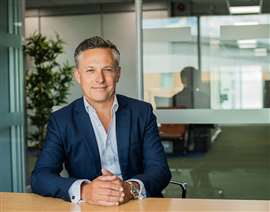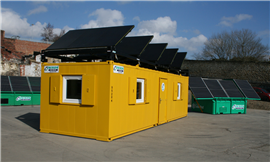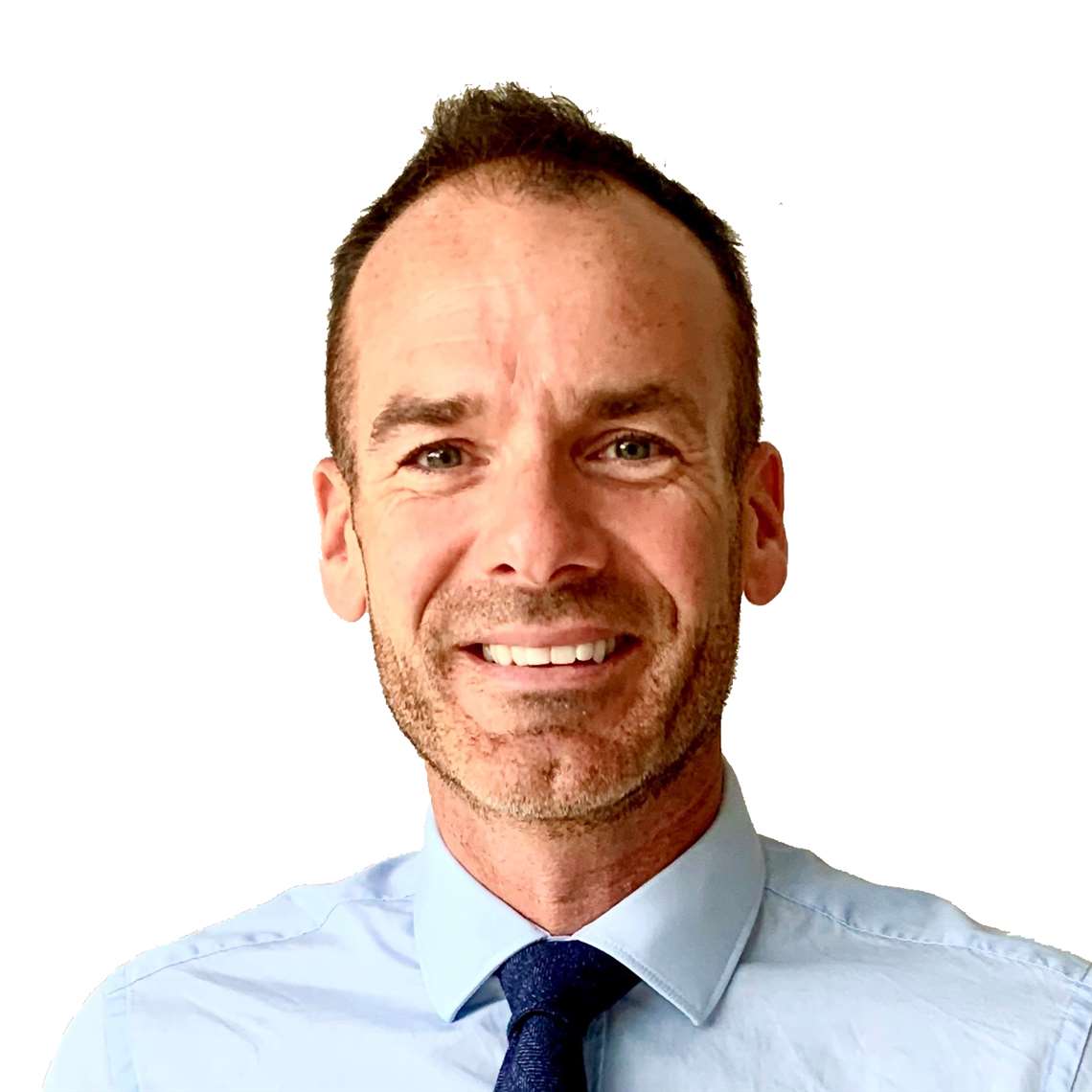Green means go: Nixon Hire CEO on the switch to becoming a sustainability specialist
28 April 2025
Last year UK-based rental company Nixon Hire took the dramatic decision to sell off its entire fleet of larger traditional plant hire equipment and instead focus on equipment for “sustainable sites.” CEO Graham Nixon talks to IRN’s Lewis Tyler about the shift from generalist to specialist.
 Graham Nixon, CEO of Nixon Hire (Photo: Nixon Hire)
Graham Nixon, CEO of Nixon Hire (Photo: Nixon Hire)
A year ago, venerable UK plant hire business, Nixon Hire, made the dramatic decision to sell off its entire fleet of larger traditional plant hire equipment and instead focus on portable site accommodation and renewable power.
For the Newcastle-based company, founded in 1967, the move is part of a significant shift in corporate direction which has also seen Pricoa Private Capital take a minority stake and the company create a renewables division covering generators, welfare units and solar and hybrid-powered lights.
CEO Graham Nixon, son of company founder John Nixon, who has led the company since 2013, tells IRN how the dramatic move is panning out so far and what the company is planning next.
IRN: What has happened since the change of strategy?
Graham Nixon: “It has been a huge transitional shift. We conducted a lot of analysis. The focus has been on moving from a generalist rental company to a specialist. The sale of the large plant, which we have now executed, took a lot of resource last year.
We had the full senior leadership team on a high-performance leadership training programme, headed by myself with an external company. That was about realigning the new Nixon senior leadership team to where we’re going.
It was perfectly timed because as we’ve transitioned from a generalist to a specialist, we’re creating a new Nixon identity. We’re moving more into becoming a services solutions based expert in sustainable sites, and we’re adopting more of a consultative approach.
We are focusing on what I call our ‘core triangle,’ which is site accommodation and modular buildings, with the pull through into renewable power.
We’re also running a huge IT project in parallel with everything we’re doing on the transition. That is all about data.
At the same time, we’ve also invested heavily in the new modular building division. We brought modular building industry experts into the team, then we built around that and that’s massively paid off.
The exciting thing about that is where we really see New Nixon kicking in -the pull through from the renewable power area and associated products that go into our site accommodation.”
What immediate results have you seen?
“We’re up 16% (in revenue), but we’re 9% ahead of our internal forecasts as well.
We have “Experts in Sustainable Sites” as our underlying motto, and it’s more than the words. It’s getting past those words and embedding it throughout the business – in our data, our people, and everything we do.
It goes back to when we established our renewable power division. We had around 14 depots in the UK, and it was more of a generalist rental operation.
So we said, “let’s create four expert hubs.” We carved four out of the 14 depots, put a leader and team in each one, and that really transitioned us by focusing purely on that product – backed up by the team at head office.
We have a data hub at Newcastle, at head office, where we’re live-monitoring all of the assets.
 Nixon says the company is 9% ahead of its 2025 forecast. (Photo: Nixon Hire)
Nixon says the company is 9% ahead of its 2025 forecast. (Photo: Nixon Hire)
You might have seen stuff on LinkedIn that we post out on that. That was probably the transitional change—it’s making sure that we are what we say we are, and backing that up.”
Have there been any challenges following the move?
“There have been lots of challenges. At the back end of the year, we said, “right, that’s all the heavy lifting done,” but it hasn’t happened that way.
There have been a lot of loose ends to pick up. When you’re running a business that was very high churn, logistically challenging products, there’s quite a long list,mainly around simplifying processes, to be honest.
You’re putting a heavy plant machine on site—we had a lot of checks and processes around that. It’s weeding through those and implementing changes.
We dropped quite a lot of headcount last year when we sold the last part of large plant. Now there’s an upward spike as we’re bringing in new talent in the new sectors – the new divisions that we’ve created.
The upside is it is a simpler business going forward. We’ve surrounded ourselves with great people, experts in their areas, so it’s pretty exciting going forward.”
How has the move impacted customers and how have they reacted to it?
“A couple of things on that. We did a roadshow last year and the company really got into the New Nixon world – sitting down with the guys, talking to them.
It was very well structured. We’re doing another one in the middle of the second quarter as an update to our own internal teams.
We’re actually working on a go-to-market project for customers. We are very face-to-face with our customers – we’ve got quite a large sales team, and we have great relationships.
Our customer categories have changed. We have more renewable power customers. The change has been phenomenal.
We’ve moved away from utility-style customers to more energy, data centres, film and retail, those sorts of categories. That’s because of this one-stop shop we’ve created around site accommodation and renewable power.
Everybody has carbon on their radars, and we’re approaching it from the sustainability side – working much more to understand what a customer’s needs are.
We’ll even put a test site in for some of these customers to show them the performance, with the confidence that we can reduce their carbon footprint.”
So you are able to serve legacy customers and still enter new segments that weren’t previously expected?
“Yeah, both. Renewable power has opened new doors, and modular buildings has given us access to a whole wave of new customers.
When you go into one of our modular units, it’s nice, light and airy. It’s very environmentally efficient.”
Is there anything you didn’t expect?
“What took us by surprise is that customers are still coming to Nixon for other products, even after we sold the large plant part of our offering.
We’ve got our core products, then what we class as our 360 service-related products – Wi-Fi, smoke detectors, security around your sites, everything that accompanies that.
But for customers who say, “we just want everything off you,” we still offer the large plant and other products we’ve let go of through re-rental.“
You previously spoke about the rehire model. How has that been going since you’ve sold off the fleet? Are you looking for more partnerships?
“We’re really focusing on refining the rehire model as part of the new Nixon identity, making it a more sustainable supply chain.
At the same time, we’ve got customers who want to deal with Nixon as a one-stop shop, so rehire has actually grown significantly since we moved away from large plant.
People still come to us for those products, so we’ve built a solid supply chain to support that. But our core focus is on rehire partnerships that align with our sustainable offering.
Even though some customers still want diesel, we’re backing that up with solar and battery storage units as part of a greener package.”
What impact has the move had on CapEx?
“Large plant was very high maintenance CapEx. We didn’t really put a lot of growth onto large plant last year because we knew what we were going into this year.
The CapEx has all been more into the modular buildings side. I think we’ve got about £15 million in CapEx for this year, and £5 or £6 million of that is in modular buildings, renewable power, and site accommodation.
You don’t get the maintenance CapEx as you do in large plant – with cabins, you refurbish them down the line and bring them out like a brand new unit again.”
It’s still early days, so how is the company measuring success?
“We measure success across several sectors. In renewable energy, we’re up 130%, with £1.3 million more than last year. Utilities are up 30%, construction is up 3%, and infrastructure is up 58%.
A lot of our focus and energy is on the renewable energy sector, including wind farms and data centres, driven by our modular building division and renewable power. The utility sector has also surprised me, as we still trade heavily in utility work.”
You’ve previously mentioned the IT project. Can you explain that in detail?
“We’re moving to Microsoft Dynamics. While we have a core rental system, we’re integrating everything – accounts, CRM, job allocations, and data – into one platform.
This includes AI and refining processes, along with improving customer portals to enhance the customer journey.”
And will that incorporate things like emissions tracking, state of equipment and predictive maintenance?
“Yeah, everything. The telematics covers much more than just performance – servicing, emissions tracking, predictive maintenance, all of that goes in there.”
When do you expect that to be available?
“The dashboard’s actually out there now – we’re testing it with two or three customers and refining it, making sure it does what it’s supposed to do.
These things are always going to evolve, but this is what we’re calling phase one: linking it to customer sites and their data to produce meaningful insights.
It’s a bit like what you get with Octopus Energy. You log in and see your usage, ratings, all that sort of stuff. We’re aiming for something similar, but tailored to our customers’ needs on site.
We’re working closely with maybe four or five customers right now to really get it right. There’ll be a few tweaks along the way, but we’re aiming to roll it out more widely this year.”
Are you targeting corporate acquisitions?
“I don’t think acquisitions are really on our radar. With site accommodation and modular buildings, it’s more of a greenfield approach for us.
The products need to mix and link well together – cabins that look and feel part of the same setup – so growing organically makes more sense.
This year is about tidying up loose ends, embedding our new strategy within the business and with customers, and really refining our go-to-market approach.
We’ve always been a company that invests in its own growth. Historically, we’ve grown around 20% a year, and we’ll continue to do that – mainly through greenfield sites, especially in the South. We see potential for expansion across three or four sites down there.”
 A Nixon Hire solar smart frame
A Nixon Hire solar smart frame
Is that because you are seeing higher demand for sustainable solutions in the south?
“Our model is absolutely to be a sustainable provider – that’s at the core of what we do. But beyond that, we’ve got a lot of unfinished business in the South.
We’ve been refining our depot network in the North and Scotland as we’ve transitioned away from plant, assessing whether those sites still suit what we’re doing now.
I toured all the depots before Christmas last year and while some still need polishing, we know our biggest opportunity is in the South.
Bedford is currently our largest southern site, and while we’ve got a smaller site in Essex, we see real need south of London.
These depots are substantial – 6-acre sites with huge outreach – but even now, Bedford is reaching down to the South Coast, which isn’t efficient.
So, it’s about efficiency and coverage as much as growth. We’re actively looking at the South East – Kent, Gatwick, Swindon as our immediate target areas.”
STAY CONNECTED



Receive the information you need when you need it through our world-leading magazines, newsletters and daily briefings.
CONNECT WITH THE TEAM







